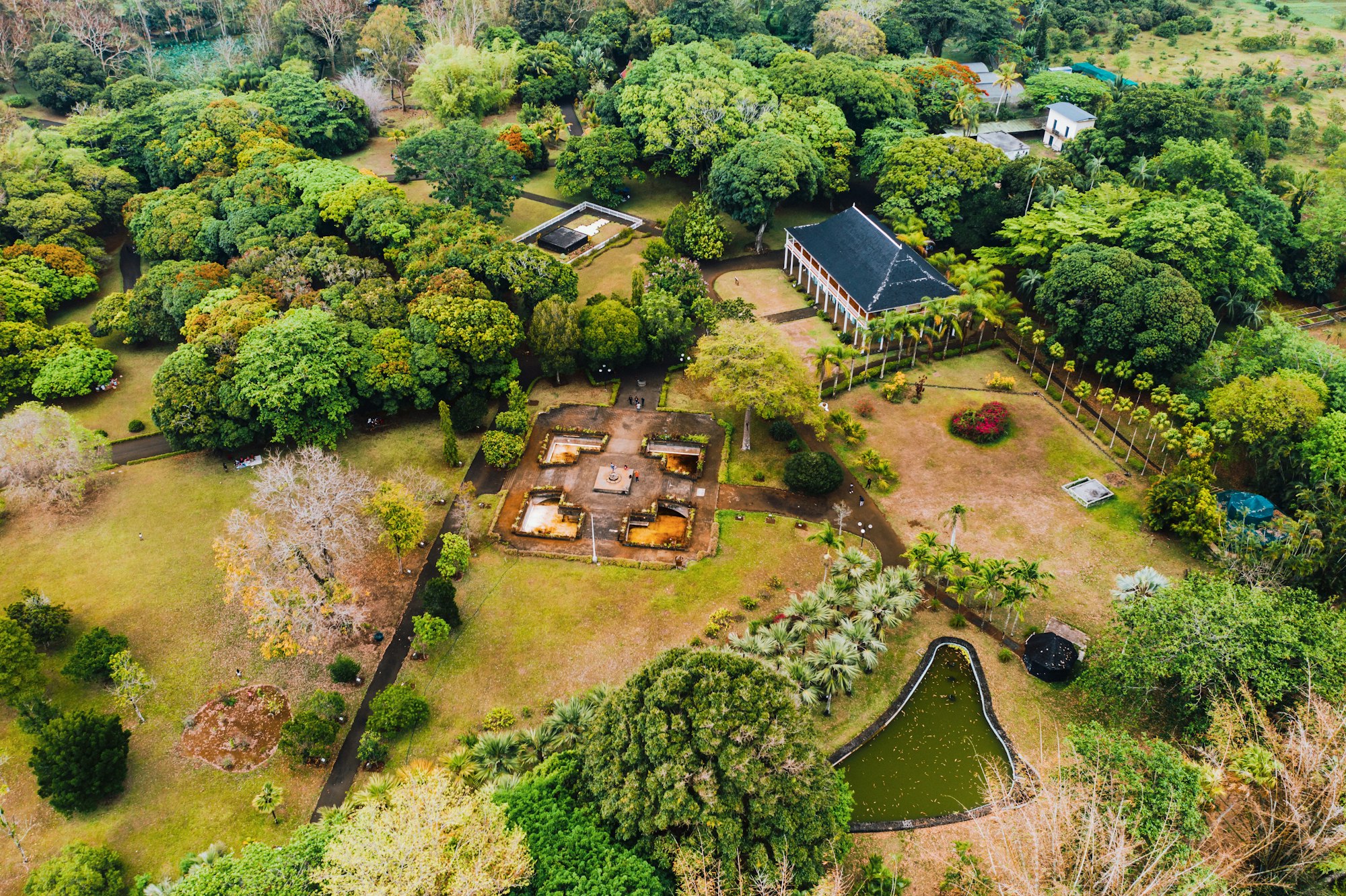Creating a child-friendly garden doesn't have to be a daunting task. With thoughtful design, you can transform any outdoor space into a magical escape that sparks imagination and encourages play. From sensory zones filled with vibrant plants to playful structures that foster creativity, every element can contribute to a nurturing environment. Explore innovative ideas tailored for the UK climate, ensuring your garden is both safe and enchanting for children of all ages. A wonderfully designed garden offers endless opportunities for adventure. Let's make your garden a true sanctuary for play.
Design Tips for a Child-Friendly Garden
Creating a child-friendly garden involves more than just a play area; it requires thoughtful design to ensure safety and engagement for children. A well-designed garden can be a haven for exploration and learning.
Safe and Engaging Play Areas
Safety is paramount in a child-friendly garden design. Ensure play areas are free from hazards such as sharp edges or toxic plants. Soft surfaces, like grass or rubber mulch, can cushion falls, providing a safe environment for active play. Engage children's imagination by incorporating themed play zones, such as pirate ships or fairy gardens, which can stimulate creativity and adventure.
Choosing Appropriate Materials
Selecting the right materials is crucial. Durable, non-toxic materials are ideal for garden features. For pathways, consider using gravel or bark chips, which are safe and environmentally friendly. Wooden elements, like benches or small bridges, should be treated to prevent splinters and withstand weather conditions, ensuring longevity and safety.
Incorporating Sensory Elements
A child-friendly garden should also offer sensory experiences. Incorporate plants with varying textures, scents, and colours to stimulate the senses. Herbs like lavender and mint provide aromatic experiences, while sunflowers and marigolds add vibrant visual appeal. Water features, such as a small fountain or birdbath, can introduce soothing sounds, enhancing the sensory richness of the garden.
Safety Considerations for Garden Spaces
Ensuring garden safety for children is essential when designing a child-friendly garden. Begin by identifying potential hazards. Look for sharp tools, thorny plants, or areas where children might trip. Secure these items or remove them to prevent accidents.
Fencing and boundary solutions are crucial. A sturdy fence can keep children within safe limits and prevent them from wandering into potentially dangerous areas. Consider fences that are at least four feet high with no gaps large enough for a child to squeeze through. Gates should have child-proof locks to ensure they remain closed.
When selecting play equipment, opt for items specifically designed for children. Ensure swings, slides, and climbing frames are robust and have no sharp edges. Equipment should be installed over soft surfaces like rubber mulch or sand to cushion falls.
Soft landscaping options add an extra layer of safety. Use grass, wood chips, or bark mulch in play areas to reduce injury risk. Avoid hard surfaces like concrete or stone.
By addressing these safety aspects, you create a garden space where children can play freely and securely, fostering a joyful and worry-free environment for both children and parents.
Plant Suggestions for a Kid-Friendly Environment
Designing a garden with child-safe plants is crucial to ensure a safe and engaging space for children. Selecting non-toxic plants is the first step. Opt for plants like sunflowers, marigolds, and snapdragons, which are not only safe but also vibrant and attractive. These plants can captivate children's attention and stimulate their curiosity.
Durable Plants for Play
When choosing plants, consider their durability. Hardy plants like lavender and rosemary can withstand the rough and tumble of children's play. These plants are resilient and can recover quickly from minor damage, making them ideal for areas where children frequently play. Additionally, their aromatic properties can enhance the sensory experience in the garden.
Themed Planting Areas
Creating themed planting areas can inspire children's imagination and make the garden more engaging. Consider designing sections like a butterfly garden with nectar-rich plants or a herb garden where children can explore different scents and tastes. These themed areas not only provide educational opportunities but also encourage children to interact more with their surroundings.
Incorporating a variety of child-safe plants ensures a vibrant, durable, and imaginative garden environment, fostering both safety and creativity for young explorers.
Layout Ideas for Play and Exploration
Creating a Garden Layout for Kids demands thoughtful planning to balance play and safety. Designing pathways and play zones is essential for encouraging exploration. Curved paths can guide children through the garden, making the journey as exciting as the destination. Use materials like gravel or bark chips for pathways, ensuring they are both safe and environmentally friendly.
Designing Pathways and Play Zones
Incorporate play zones that cater to various interests. A sandbox or a small climbing structure can offer physical challenges, while a quiet nook with a bench encourages reading or observation. These areas should be easily accessible from the pathways, allowing seamless movement throughout the garden.
Creating Shaded Areas
Shaded areas are crucial for comfort and protection from the sun. Planting trees or installing pergolas can provide natural shade, creating cool spots for rest and relaxation. These areas can double as picnic zones or places for quiet activities, ensuring children remain engaged while staying protected from harsh weather.
Incorporating Flexible Spaces
Flexible spaces allow for various activities, from impromptu games to gardening lessons. Open lawns or multi-purpose areas can adapt to different needs, ensuring the garden remains a dynamic environment that evolves with the children’s interests.
DIY Projects for Engaging Garden Features
Creating a child-friendly garden can be an exciting DIY adventure. These projects not only enhance the garden's appeal but also provide children with interactive spaces to explore and learn.
Step-by-Step Guides for Play Structures
Building play structures can be a rewarding project. Start by selecting a safe, flat area in the garden. Use durable, non-toxic materials like treated wood for longevity. A simple structure, such as a climbing frame or a swing set, can be constructed with basic tools. Ensure all components are securely fastened and smooth to prevent injuries.
Crafting Sensory Gardens with Natural Materials
A sensory garden stimulates children's senses. Choose natural materials like stones, wood, and plants with varied textures. Create pathways with gravel or bark chips and incorporate plants like lavender or mint for their aromatic qualities. Adding a small water feature or wind chimes can enhance the sensory experience.
Creating Interactive Elements
Interactive elements, such as mud kitchens or water play areas, encourage imaginative play. For a mud kitchen, repurpose old cabinets or pallets. Equip it with child-safe utensils and containers. A water play area can be as simple as a shallow basin with cups and funnels. These elements offer endless opportunities for creative exploration.
Environmental Factors to Consider in the UK
Understanding the UK gardening climate is essential when designing a child-friendly garden. The UK's climate, characterized by mild temperatures and frequent rainfall, influences plant selection and garden maintenance. This climate supports a wide variety of flora but also demands careful planning to manage water effectively.
Seasonal Considerations for Child-Friendly Gardening
In the UK, seasonal changes significantly impact garden design. Spring and summer offer optimal conditions for planting and outdoor activities, while autumn and winter require preparations to protect plants from frost and excessive moisture. Ensuring year-round interest and safety in the garden involves selecting plants that thrive in different seasons, allowing children to engage with the garden throughout the year.
Selecting Water-Efficient Plants and Sustainable Practices
Choosing water-efficient plants is crucial in the UK to make the best use of available resources. Plants like lavender, rosemary, and sedums are excellent choices as they require less water and are hardy enough to withstand varying weather conditions. Implementing sustainable practices, such as rainwater harvesting and using mulch to retain soil moisture, can further enhance the garden's environmental friendliness. These practices not only conserve water but also teach children about sustainability and environmental stewardship.
















